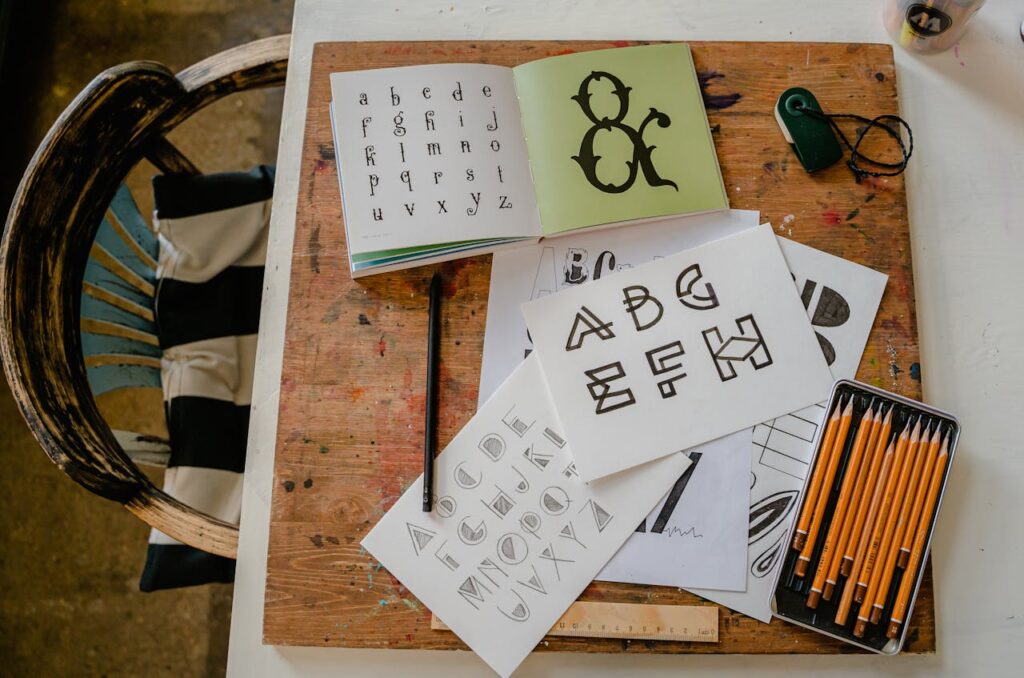Are you thinking to build your own brand identity? In today’s fast-paced world, creating a strong and memorable brand identity is crucial for any business looking to stand out in the marketplace. Whether you’re starting your own business, launching a product, or rebranding an existing company, building your own brand identity is the first step toward success. But where do you start? How do you transform an idea into a visual identity that speaks to your audience?
At The Design Mentor, we believe that building your own brand identity doesn’t need to be overwhelming. With the right guidance and a clear roadmap, anyone can create a brand identity that captures attention and communicates their values. Our brand design course takes you through each step of the process, breaking it down into manageable, actionable steps.
In this article, we’ll take you through 7 easy steps to help you build your own brand identity from scratch. And by the end, you’ll see how our course can provide you with all the tools and knowledge to implement these steps successfully.
Step 1: Understand Your Brand’s Core Values
Before you can build your own brand identity, you need to understand what your brand represents. A brand isn’t just a logo or a color scheme—it’s a story, a personality, and a set of values that resonate with your target audience.
Start by asking yourself these key questions:
- What is the purpose of your brand?
- What values does your brand uphold?
- Who is your ideal customer?
Once you have a solid understanding of your brand’s purpose and values, you can start to build your own brand identity that accurately reflects these aspects. The first step in our course at The Design Mentor helps you define these core values, ensuring that your branding is aligned with what your business stands for.
Step 2: Define Your Target Audience
Knowing your audience is one of the most important aspects of building your own brand identity. Your brand identity should speak directly to the people you want to attract. The visual elements—logos, fonts, colors, and tone—should all cater to the preferences and expectations of your target audience.
At The Design Mentor, we guide you through the process of identifying your target audience. In our course, you’ll learn how to create customer personas, which will help you tailor your brand identity to the needs and desires of your ideal clients.
Step 3: Create a Mood Board

A mood board is a fantastic way to visually organize your thoughts and ideas for your brand identity. It’s a collage of images, color palettes, textures, and design elements that capture the overall feel of your brand. This exercise will help you define the visual direction of your brand, from colors and typography to imagery and style.
When you’re ready to build your own brand identity, your mood board will serve as a reference throughout the process, ensuring that your design decisions are consistent with the vision you have for your brand. In The Design Mentor course, we provide a step-by-step guide on how to create a mood board that will help you define the tone and look of your brand identity.
Step 4: Design Your Logo
Your logo is often the first thing people will associate with your brand. It’s the centerpiece of your brand identity, so it needs to be distinctive, memorable, and scalable. Building your own brand identity starts with designing a logo that effectively represents your brand’s values and resonates with your target audience.
In our course, we break down the logo design process into manageable steps, helping you create a logo that is not only visually appealing but also functional across various mediums—from business cards to websites. You’ll learn how to use design tools like Figma to create your logo and refine it until it perfectly embodies your brand.
Step 5: Choose Your Brand Colors and Typography

Colors and typography are powerful tools that influence how your audience perceives your brand. When you build your own brand identity, choosing the right colors and fonts is crucial for creating a cohesive and professional look.
Your brand’s color palette should reflect the emotions you want your audience to feel. For example, blue often conveys trust and professionalism, while red can evoke excitement and energy. Similarly, the fonts you choose should align with your brand’s personality—whether you’re going for a modern, clean look or something more playful and bold.
In our course at The Design Mentor, we take you step-by-step through selecting the right colors and typography for your brand. We teach you how to ensure consistency across all your brand materials, from your website to your marketing assets.
Step 6: Create a Brand Style Guide
A brand style guide is a comprehensive document that outlines all the design elements of your brand identity, including your logo, color palette, typography, imagery style, and more. It ensures consistency across all your branding materials and provides a clear reference for anyone working on your brand—whether it’s a designer, marketer, or content creator.
When you build your own brand identity, creating a style guide is essential for maintaining a consistent look and feel. In our course at The Design Mentor, we teach you how to put together a brand style guide that outlines all the visual aspects of your brand identity. This way, you’ll have everything you need to create cohesive and professional branding materials, no matter what project you’re working on.
In addition to the video lessons, we provide over 20 downloadable resources—templates, checklists, and documents—that will help you implement your brand style guide effectively. These resources ensure that you have everything you need to build and maintain your brand identity consistently, without missing any crucial details.
Step 7: Implement Your Brand Identity Across All Platforms
Once you’ve completed the design elements of your brand identity, it’s time to implement them across all your platforms. This includes your website, social media profiles, packaging, advertising materials, and more. Building your own brand identity is not just about designing the perfect logo—it’s about creating a cohesive experience for your audience across every touchpoint.
In The Design Mentor course, we help you implement your brand identity on your website and social media platforms. We guide you through designing your website using tools like WordPress and Figma, and show you how to use your brand identity consistently across all your digital and print materials.
Our downloadable resources also include social media templates, website mockups, and more—over 20 different documents to help you apply your brand identity seamlessly across all channels.
Why Choose The Design Mentor’s Branding Course?
At The Design Mentor, we understand that building your own brand identity can feel like a daunting task, especially for beginners. That’s why our branding course is designed to break the process down into simple, easy-to-follow steps. With over 13 years of experience, our instructor brings real-world insights to help you create a brand identity that resonates with your audience and stands out in the market.
Our course is ideal for:
- Beginners who want to learn how to build their own brand identity from scratch.
- Entrepreneurs who need a professional brand identity for their new business.
- Freelancers who want to offer brand design services to clients.
Build Your Own Brand Identity Today
Whether you’re starting a new business or rebranding an existing one, learning how to build your own brand identity is one of the most important steps you can take toward success. With the right guidance and tools, you can create a strong and memorable brand that will connect with your audience and set you apart from the competition.
At The Design Mentor, we make it easy to build your own brand identity with our step-by-step branding course. With a focus on practical skills, actionable steps, and real-world experience, we’ll guide you through every stage of the branding process, from defining your values to implementing your brand across all platforms.
Our course isn’t just about learning; it also provides over 20 downloadable documents to help you implement everything you learn and stay organized throughout the process.